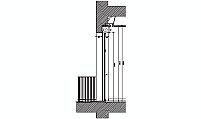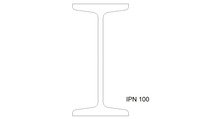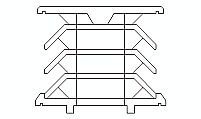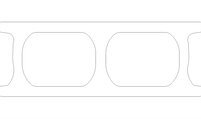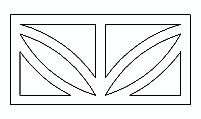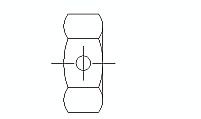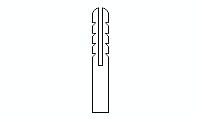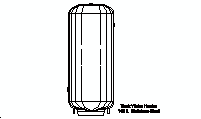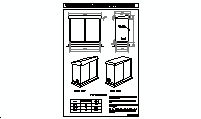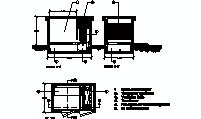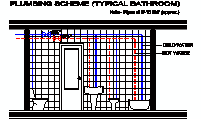CAD Blocks categories
 3D models
3D models home furniture
home furniture sanitary ware - bathrooms
sanitary ware - bathrooms professional equipment
professional equipment doors and windows
doors and windows people and animals
people and animals plants and trees
plants and trees vehicles - transports
vehicles - transports architectural details
architectural details mechanical - electrical
mechanical - electrical urban planning - civil works
urban planning - civil works safety health construction
safety health construction accessible design
accessible design drawing sheet
drawing sheet signals
signals construction machinery
construction machinery accessories and objects
accessories and objects maps and street maps
maps and street maps
Decorative Concrete Screen Block - DWG Design

size: 4 kb
category: architectural details
related categories:
description: Front view of a decorative concrete screen block featuring a single oval-shaped opening with straight vertical edges, used for fences and ventilation.
file extension: .dwg CAD - AutoCAD software
Key Features of Decorative Concrete Screen Blocks
Unique Design of Decorative Concrete Screen Blocks
Decorative concrete screen blocks are an excellent solution for combining aesthetics and functionality. The block shown in the image features a single, central oval-shaped opening with straight vertical edges, making it a distinctive design element for both residential and commercial projects. The smooth curves and geometric precision of the oval add a modern and minimalistic appeal to structures.
This block is commonly used in fence enclosures, ventilated partitions, and garden walls. The large hollow in the center provides ample light and air passage, making it ideal for creating ventilated screens or accent walls. Its durable concrete material ensures it withstands environmental stress, making it suitable for both interior and exterior applications.
Standard Sizes and Composition of Screen Blocks
The dimensions of decorative screen blocks vary across manufacturers. Common sizes include 16 x 16 inches (40 x 40 cm), 12 x 12 inches (30 x 30 cm), and customized dimensions tailored for specific projects. The block's material typically consists of Portland cement, fine aggregates, and durable binding agents, ensuring strength and longevity.
The smooth or textured finish of these blocks enhances their aesthetic appeal. Most blocks are manufactured under strict standards, such as ASTM C129, which regulates non-load-bearing masonry units. This ensures consistent quality and durability, particularly for decorative applications.
Installation and Application of Concrete Screen Blocks
- What are common installation methods for screen blocks?
- Screen blocks are typically installed using mortar joints for structural stability. The joints are aligned for a seamless appearance, often at a standard thickness of 3/8 inches.
- Are screen blocks reinforced?
- While reinforcement is not always required, steel rods and concrete grout can be added to improve stability in high-wind or load-bearing scenarios.
- What are the main uses of these blocks?
- Decorative screen blocks are often used in ventilated partitions, boundary walls, garden dividers, and feature walls. They are also common in tropical climates for passive cooling.
- Can these blocks be painted or finished?
- Yes, screen blocks can be painted or coated with waterproof sealants or left with their natural concrete finish for a raw aesthetic.
- Do they require a specific base for installation?
- A reinforced concrete footing or base is often recommended to support their weight and ensure long-term durability.
Advantages of Decorative Screen Blocks
Decorative concrete screen blocks offer multiple benefits. Their open design allows for natural light and air circulation, making them energy-efficient and ideal for passive cooling. Additionally, their durable concrete composition ensures long-lasting performance, even in harsh weather conditions.
Another significant advantage is their design versatility. The oval-shaped opening, as seen in the image, provides a unique architectural element that can complement a variety of styles, from modern to traditional. Screen blocks are also sustainable, often manufactured with recycled materials and requiring minimal maintenance over time.
Evolution and Global Use of Screen Blocks
Concrete screen blocks were first introduced in the mid-20th century as a response to the need for functional yet visually appealing building materials. Their designs have evolved from simple geometric shapes to more intricate patterns, such as the oval design featured in this example. Initially popular in tropical climates, their use has spread globally for both residential and commercial projects.
Across different regions, these blocks are referred to by various names, including breeze blocks, ventilation blocks, or design blocks. In Europe, they are often used as garden dividers, while in Asia, they are favored for ventilated facades. The global adaptation of screen blocks highlights their versatility and timeless appeal in architectural design.



